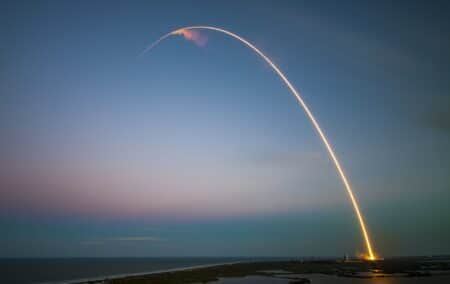An 18-ton fragment of the Long March-5b rocket used to launch the first module of China’s new space station last month is gradually falling to Earth and could re-enter the atmosphere in the early hours tomorrow.
According to the BBC, tracking radars are closely following the orbit of what has been described as one of the largest items in decades to have an undirected dive into the atmosphere.
Various space-debris modelling experts are pointing to the early hours tomorrow as the likely moment of re-entry, though the report notes that such projections are always highly uncertain.
Originally injected into an elliptical orbit approximately 160km by 375km above Earth’s surface on 29 April, the Long March-5b segment has been losing height ever since.
The report says most of the vehicle should burn up when it makes its final plunge through the atmosphere, although there is always the possibility that metals with high melting points, and other resistant materials, could survive to the surface.
The BBC says that when a similar core stage returned to Earth a year ago, piping assumed to be from the rocket was identified on the ground in Ivory Coast.
The chances of anyone actually being hit by a piece of space junk are very small, according to BBC science correspondent Jonathan Amos, not least because so much of the Earth’s surface is covered by ocean, and because that part which is land includes huge areas that are uninhabited.
The zone of potential fall in this case is restricted still further by the trajectory of the rocket stage. It’s moving on an inclination to the equator of about 41.5 degrees. This means it’s possible already to exclude the chance that any debris could fall further north than approximately 41.5 degrees North latitude and further south than 41.5 degrees South latitude.
China has bridled at the suggestion that it has been negligent in allowing the uncontrolled return of so large an object, but space experts say it does reflect poorly on China.
Modern practice now calls for rocket stages to be de-orbited as soon as possible after their mission, using an engine to direct their fall over safe zones, usually over the ocean.
The European Space Agency said that during the past decade, roughly 100 satellites and rocket bodies had re-entered the atmosphere each year, with a total annual mass of about 150 tons.
Image by Free-Photos from Pixabay

